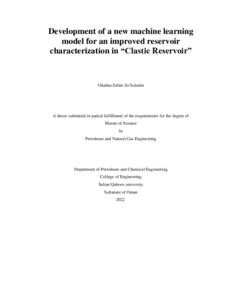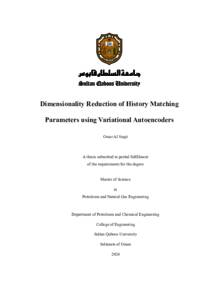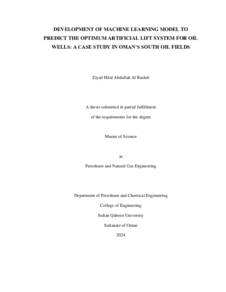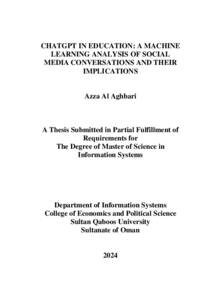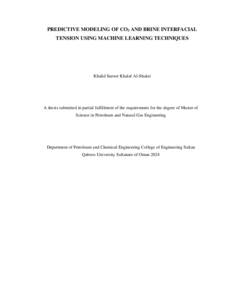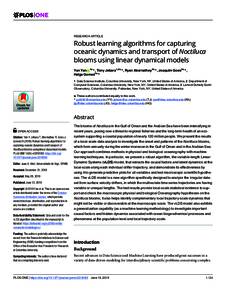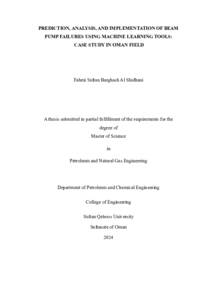Document
Development of a new machine learning model for an improved reservoir characterization in "Clastic Reservoir".
Publisher
Sultan Qaboos University.
Gregorian
2022
Language
English
English abstract
Porosity, permeability, and fluid saturations are considered critical petrophysical
parameters for the reservoir because of their significant impact on the oil and gas reserve
estimation as well as petroleum economics. For identifying reservoir properties,
traditional methods rely on lab measurements, wireline logs, or empirical correlations
between other parameters such as formation resistivity with hydrocarbon saturation,
density with porosity, which are either expensive, time-consuming, or do not meet the
accuracy requirements. All the foregoing limitations are overcome by the new horizon for
integrating machine learning techniques as a new way for predicting these properties.
Therefore, this work will develop a new prediction model by combining advanced data
analytics with visualization approaches for pre-processing the logs collected in the
Sultanate of Oman's Gharif Reservoir. The relationship between the output and input
variables was investigated using descriptive statistics, then the Extreme Gradient Boosting
(XGBoost) regression model was applied to predict reservoir porosity, water saturation,
and permeability. Then, to minimize the dimensionality of the input features, various
feature selection techniques were evaluated, including SelectKBest, Recursive Feature
Elimination, Random Forest, and Principal Component Analysis. To improve the
accuracy of the results, a novel custom ensemble model of Random Forest and Recursive
Feature Elimination with an enhanced feature engineering technique was presented. The
proposed unique ensemble model appears to outperform the classic XGBoost, revealing
the immense potential of ensemble modeling for reservoir characterization. The new
custom ensemble model reduced the characteristics of the high-dimensional dataset while
also achieving low MAE and RMSE prediction errors of 0.0037 & 0.023 for permeability
and saturation respectively
Member of
Resource URL
Arabic abstract
تعتبر المسامية والنفاذية وتشبع السوائل من الخصائص البتر وفيزيائية الرئيسية للمكمن النفطي بسبب تأثيرها الكبير على تقدير احتياطي الهيدروكربونات واقتصاديات البترول. وتقدير او حساب هذه الخصائص تأتي من التجارب والقياسات المخبرية او عن طريق ادوات التسجيل في االبار النفطية وغيرها من الطرق التقليدية المستخدمة . ولكن الوقت المستغرق والدقة والتكلفة العالية هي من العيوب المرتبطة بهذه الطرق. كل هذه االسباب دعت للبحث عن طرق ومناهج جديدة لتنبؤ بهذه الخصائص وتتغلب على العيوب المذكورة في الطرق الحالية. هذا البحث يسلط الضوء على احدى هذه الطرق اال وهي تقنية الذكاء االصطناعي وبالتحديد تعلم االلة. وفكرة هذه التقنية تعتمد كليا على تعليم االله بخصائص المدخالت باستخدام اساليب احصائية معينه وتتبعها تطبيق بعض خوارزميات لتحسين هذا النموذج ومقارنته مع الخصائص االخرى )المخرجات(. ولقد تم تطبيق هذه المنهجية في احدى المكامن النفطية الرملية الموجودة في سلطنة عمان ويعرف باسم تكوين غريف الرملي. بعد ذلك، لتقليل ابعاد المدخالت، تم تقييم تقنيات اختيار الخصائص المختلفة، بما في ذلك اختيار أفضل الخصائص وإزالة المدخالت المتكررة والغابات العشوائية وتحليل المكونات الرئيسية للمدخالت. تم تقديم نموذج جديد ويتميز بمزج مجموعة من الخوارزميا ت المتخصصة لزيادة دقة التنبؤ والحسابات لخصائص المكمن المذكورة، لم يقلل نموذج المجموعة المخصصة الجديد من ميزات مجموعة البيانات عالية األبعاد فحسب، بل حقق أيضا أخطاء تنبؤ منخفضة استنادا إلى قيمة الخطأ المطلقة وجذر الخطأ التربيعي.
Category
Theses and Dissertations

